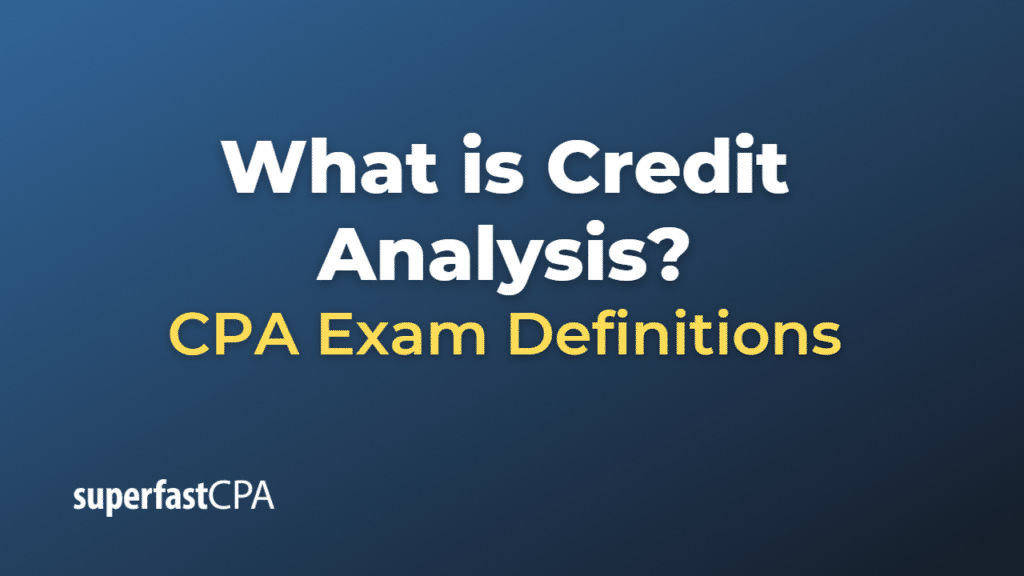Credit Analysis
Credit analysis is the process of evaluating an applicant’s loan request or a corporation’s debt issue in order to determine the likelihood that the borrower will live up to their financial obligations. It involves assessing the creditworthiness of the borrower, which includes reviewing their credit history, cash flow history and current situation, collateral assets, and the current health of their industry sector.
In other words, credit analysis is the method by which one calculates the creditworthiness of a business or organization. The audited financial statements of a large company might be analyzed when it issues or has issued bonds. Or, a bank may analyze the financial statements of a small business before making or renewing a commercial loan. The term refers to either case, whether the business is large or small.
Credit analysts are often employed by banks, credit card companies, rating agencies, and investment companies. They look at the financial statements, financial history, and current market conditions to gauge the risk of default. The analysis is then used to determine whether to extend credit, how much credit to extend, and at what interest rate.
The analysis usually involves several financial ratios like the debt to equity ratio, the current ratio, and the interest coverage ratio. Other factors such as the quality of the debtor’s management, their market position, and any collateral available will also be taken into account.
While credit analysis provides a good indication of the risk associated with a particular debt or investment, it is not foolproof, as it is based on the information available at a specific point in time and on assumptions about future performance.
Example of Credit Analysis
Let’s say a small business named ABC Manufacturing applies for a business loan from a bank. The bank would then perform a credit analysis to determine if ABC Manufacturing is likely to repay the loan. Here’s how the process might work:
- Assess Financial Statements: The bank would first look at ABC Manufacturing’s financial statements. This includes the income statement, balance sheet, and cash flow statement. The bank would be interested in seeing consistent revenue and profit figures, a strong balance sheet with more assets than liabilities, and positive cash flow.
- Calculate Financial Ratios: The bank would calculate various financial ratios to assess the company’s financial health. For example, a low debt-to-equity ratio might indicate that the company has not overburdened itself with debt. A high current ratio (current assets divided by current liabilities) might indicate that the company has enough short-term assets to cover its short-term debt.
- Review Credit History: The bank would review the company’s credit history, including any other loans or lines of credit the company has and whether it has made timely payments on those.
- Consider Collateral: The bank would consider whether ABC Manufacturing has any collateral, such as equipment or property, that could be used to secure the loan.
- Evaluate Industry and Market Conditions: Finally, the bank would evaluate the health of the manufacturing industry and the overall economy. If the industry or economy is struggling, this could negatively impact ABC Manufacturing’s ability to repay the loan.
Based on all of this information, the bank would make a decision on whether to approve the loan, and if approved, what interest rate to charge. If ABC Manufacturing has strong financials, a good credit history, valuable collateral, and operates in a healthy industry, it’s more likely to receive the loan at a favorable interest rate.













